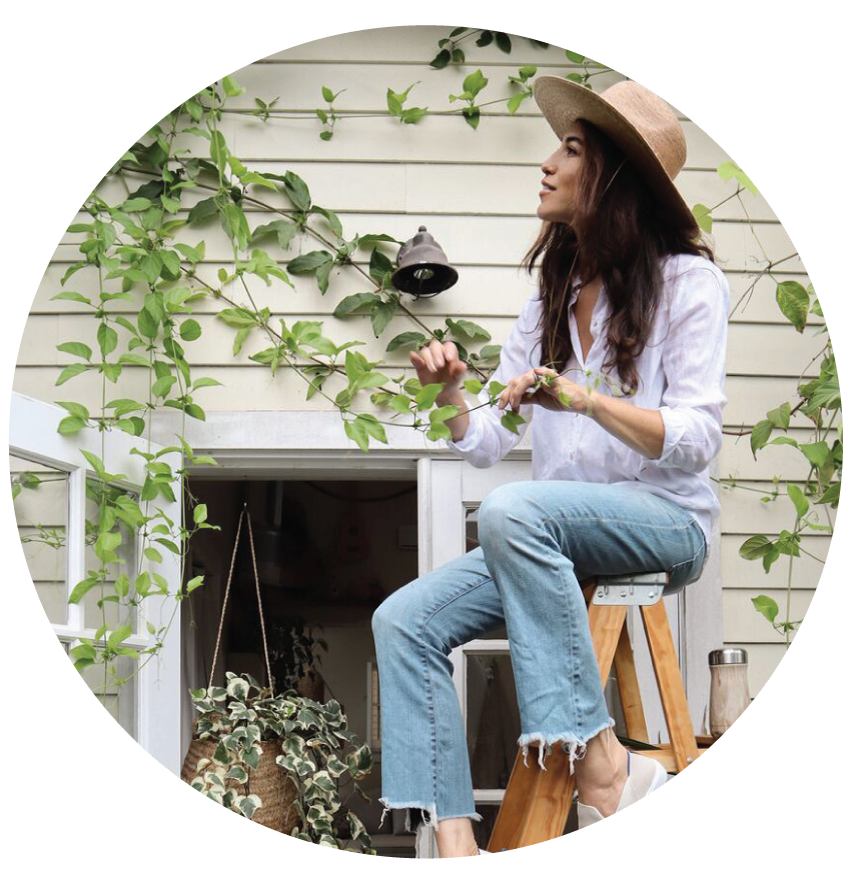Laundry as a Family Activity
There’s no getting around the chore of laundry— even in a tiny house. This is especially true for residences that with young children, pets who shed, a full-time office, and a slew of reusable/washable goods in lieu of disposable single-use supplies. (🙋🏻)
In order to make laundry feel like more of a game and less like an obligation, we’ve made washing and drying into a family activity at the cottage.
We take our vintage children’s chair out beside the bistro table set, pair it with an old restaurant bus tub (left over from our wedding), and add some water and a soap bar to then hand-wash a few garments with West.
We end up tossing everything in the washing machine, of course. But we’re constantly reevaluating and exploring ways in which to reduce our environmental footprint during the laundry process.
We only do full loads (rather than small or partial washes), and run most of them on cold, since 90% of energy used during a typical wash cycle is used for heating the water. *
We share an old, stacked washer + dryer with the neighboring tiny house. Despite the notable uptick in the loads of wash that result from practices like using reusable wipes, cloth diapers and washable toiletry supplies, our water consumption hasn’t increased drastically enough for us to see a marked difference in our utlity bills. (The only time we do see a difference is when we’re trying to get establish “large” sections of new plants. Even many of the drought-tolerant ones need more water than usual when settling in and taking root.)
Whenever possible, we try to dry everything on an all-natural folding rack, which can fit indoors easily, as well as out.
We also have a few makeshift clotheslines (made of twine and held up by tacks) strung about the garden where we can suspend additional items. West enjoys putting the linens out on the rack and lines, as well as picking them back up once they’re dry.
When we need to use the dryer, we’ve begun to add all-natural, hypoallergenic dryer balls, which can last for 1000 loads, and cut back on drying time by 25%, thus saving time and energy while softening clothes and reducing wrinkles. (We never use dryer sheets, as they’re usually filled with toxic ingredients that are routinely tested on animals.)
This whole process has become one of our go-to summer activities. And, oddly enough, we’re into it.
Source: Give a Sh*t by Ashlee Piper















